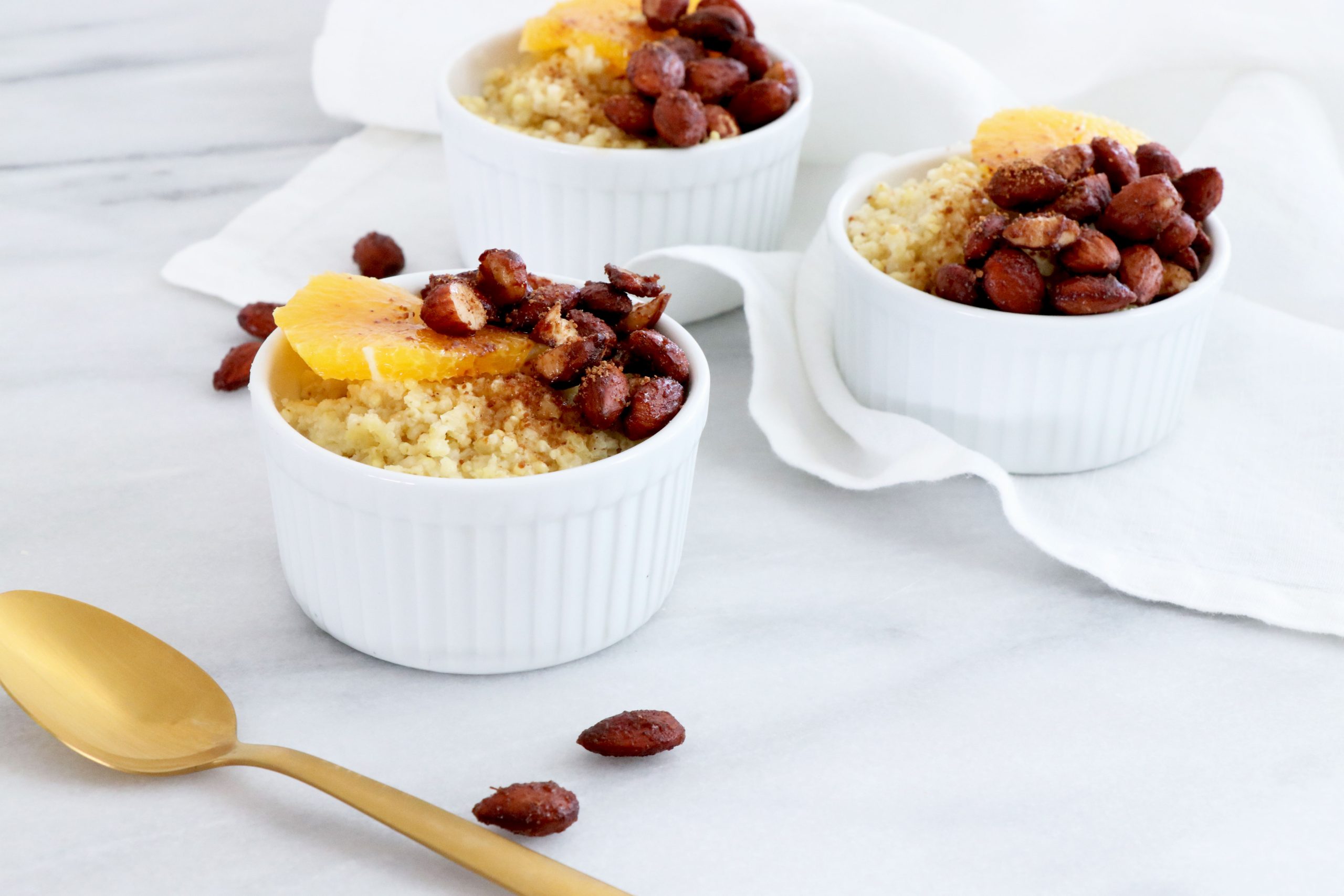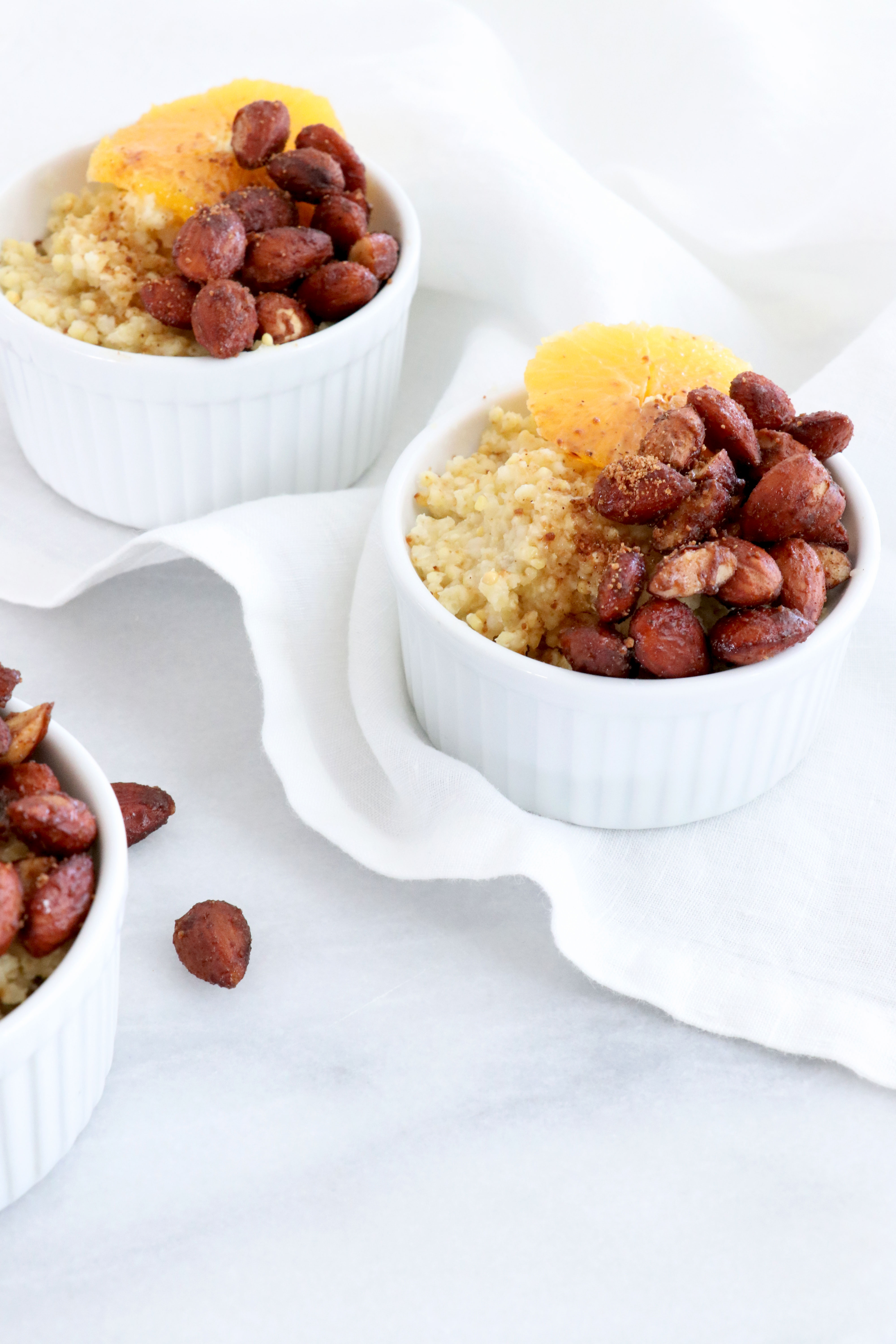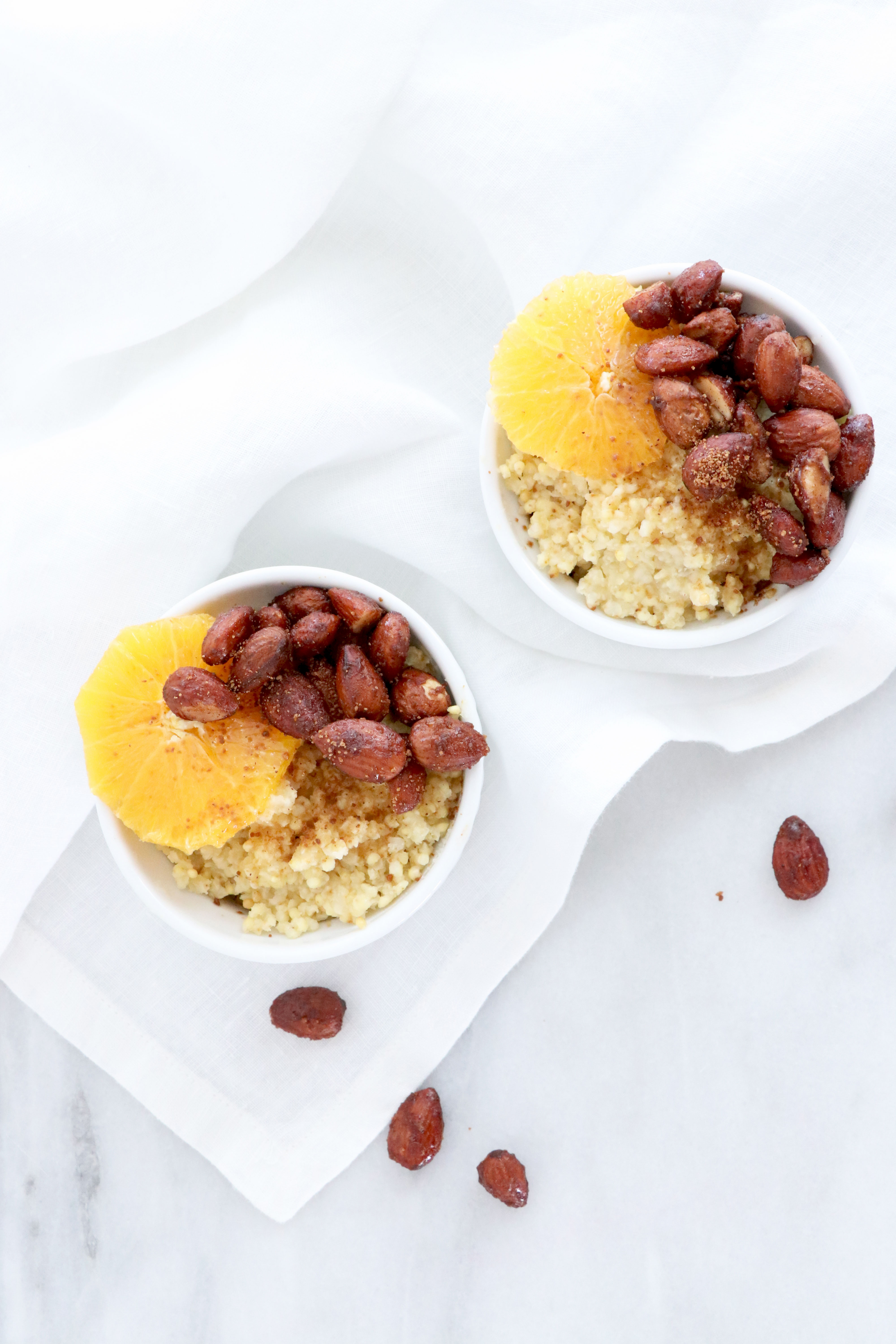
Pseudograins are seeds that cook like grains. They are naturally gluten-free and therefore are a popular choice for those who follow a gluten-free or paleo diet! Some health benefits of these grains are that they contain protein and fiber, are low on the glycemic index and contain a wide variety of vitamins and minerals. Pseudograins are also easy to digest and therefore a good option for those who may have digestive troubles.
Quinoa
Found by the Andean people over 4,000 years ago, quinoa is a seed that comes from a flowering plant that is related to the amaranth and the spinach family. During processing, the outer coat (called saponins) of the quinoa is removed, which takes away the bitterness.
Nutritional Benefits:
Quinoa is a protein packed seed that contains every single amino acid making it a complete protein food! It also contains twice as much fiber as most grains, which can aid in digestive health and may lower cholesterol and glucose levels. Quinoa also contains vitamins and minerals such as iron, potassium, magnesium and vitamin E. These antioxidants work together to protect the body from free radicals!
How To Cook / Prepare:
To ensure all the saponins are removed from the quinoa, it is important to thoroughly rinse quinoa before use. You can rinse quinoa with filtered water and a sieve. Quinoa cooks like most grains using a 2:1 ratio. Cook 1 cup of dry quinoa in 2 cups of water or broth. Boil the liquid, add in dry quinoa and let simmer with the lid on for about 20 minutes. Fluff with fork and enjoy.
Millet
Traced back to China, millet comes from small-seeded grasses that can be found throughout the world. The most widely grown sources of millet can be found in India and Africa. Millet has a neutral flavor that is great for a variety of dishes!
Nutritional Benefits:
Millet acts as a prebiotic, which means it aids in feeding the good bacteria in your gut! It is easily digested, which is good for individuals who struggle with digestive problems. Millet contains magnesium, calcium, fiber, B vitamins and other antioxidants. The high fiber content in millet may help eliminate your bad LDL cholesterol.
How To Cook / Prepare:
Rinse millet to make sure all the the unhulled pieces are removed. To make a fluffy side dish, use 2 cups of water for every 1 cup of millet. To make a creamy, more porridge consistency, use 3 cups of water for every 1 cup of millet. Boil water and bring to a simmer with the lid on and cook millet for 15 minutes. Turn off the heat and let the millet fluff for 10 minutes.

Buckwheat
Buckwheat is a seed that is most commonly found in parts of Asia. Although this seed has the name “wheat” in it, buckwheat does not contain any wheat and is actually related to rhubarb.
Nutritional Benefits:
Buckwheat has a rich supply of flavonoids, which is a phytonutrient that protects against different disease. The specific flavonoid, rutin, that is found in this seed may help protect against cardiovascular disease. Buckwheat also contains a good amount of manganese, copper, magnesium, fiber and phosphorous.
How To Cook / Prepare:
Rinse thoroughly before cooking to get rid of any excess debris. Add 1 cup part buckwheat to 2 cups boiling water or broth. Cover and simmer for about 30 minutes. Add cooked buckwheat to soups, stews or use as a breakfast cereal.
Wild Rice
Wild rice comes from a plant found in North America, India and China. This plant grows in shallow waters of lakes, streams or rivers where the head of the plant normally stays above water and this is where the wild rice is found. Although wild rice sounds like another form of traditional rice, this pseudo grain is actually not directly related to rice.
Nutritional Benefits:
Some of the nutrients that wild rice contains are B vitamins, manganese, fiber, copper, vitamin E and omega-3 fats. Due to its impressive amount of dietary fiber, wild rice can aid in balancing cholesterol as well as improving your digestion through facilitating peristalsis. Peristalsis is the contraction and relaxation of muscles in the digestive tract that helps your food contents move along.
How To Cook / Prepare:
Rinse your wild rice before use. Add 4 cups of water or broth into a large soup pot and bring to a boil. Add in 1 cup of wild rice and drop your heat to a simmer. Cover and let rice cook for 30-45 minutes or until tender. Wild rice is great in soups or also can be used to make a delicious wild rice vegetable pilaf!
Amaranth
The Amaranth plant was found in many different countries and was said to be a large portion of the Aztecs energy consumption. In the America’s and parts of Asia, they harvest mostly the seeds for food. In many parts of the world, the leaves, roots and stems of the entire Amaranth plant are used in different ethnic dishes.
Nutritional Benefits:
Amaranth is rich in vitamins, minerals, protein and fiber! It contains anti-inflammatory properties that may help with arthritis, and prevention of other diseases. It also may lower cholesterol and aid in digestion due to its fiber content. 1 cup of Amaranth provides over 100% of your daily recommended manganese, which may aid in diabetes by lowering high blood sugar levels.
How To Cook / Prepare:
Rinse amaranth seeds before cooking. Bring 3 cups of water or broth to a boil and add in 1 cup amaranth. Reduce heat to a simmer and cover and cook for 20-30 minutes or until water is absorbed. Enjoy amaranth as a breakfast cereal, added into soups, popped as a snack or added into a vegetable side and combine with other grains for the perfect side dish!

Maple Millet Breakfast Bowl with Candied Almonds

INGREDIENTS
- 1 cup millet
- 2 cups water
- ¼ teaspoon salt
- ½ tablespoon coconut oil
- 2 tablespoons maple syrup
- Toppings: Candied almonds & fresh fruit (I suggest oranges)
- 1 cup raw almonds
- 1 tablespoon real maple syrup
- 1 tablespoon coconut sugar
- 1 teaspoon cinnamon
INSTRUCTIONS
- Add the millet, water and salt a small pot.
- Turn the heat to high and bring the mixture to a boil.
- Drop the heat to low, add the coconut oil and maple syrup. Top with a lid and simmer about 15 minutes.
- Remove from stove and let sit covered and away from the heat for 10 minutes.
- Fluff with a fork and serve topped with candied almonds and fresh fruit of choice.
- Preheat the oven to 350 Fahrenheit.
- Separate the almonds in two and rough chop half, add whole and chopped almonds into a small bowl with the maple syrup and stir together.
- Add the almond and maple mix into a small glass baking dish and roast in the oven 15 minutes.
- Remove baking dish from the oven, add coconut sugar and cinnamon, stir together.
- Let cool for 15 minutes.







